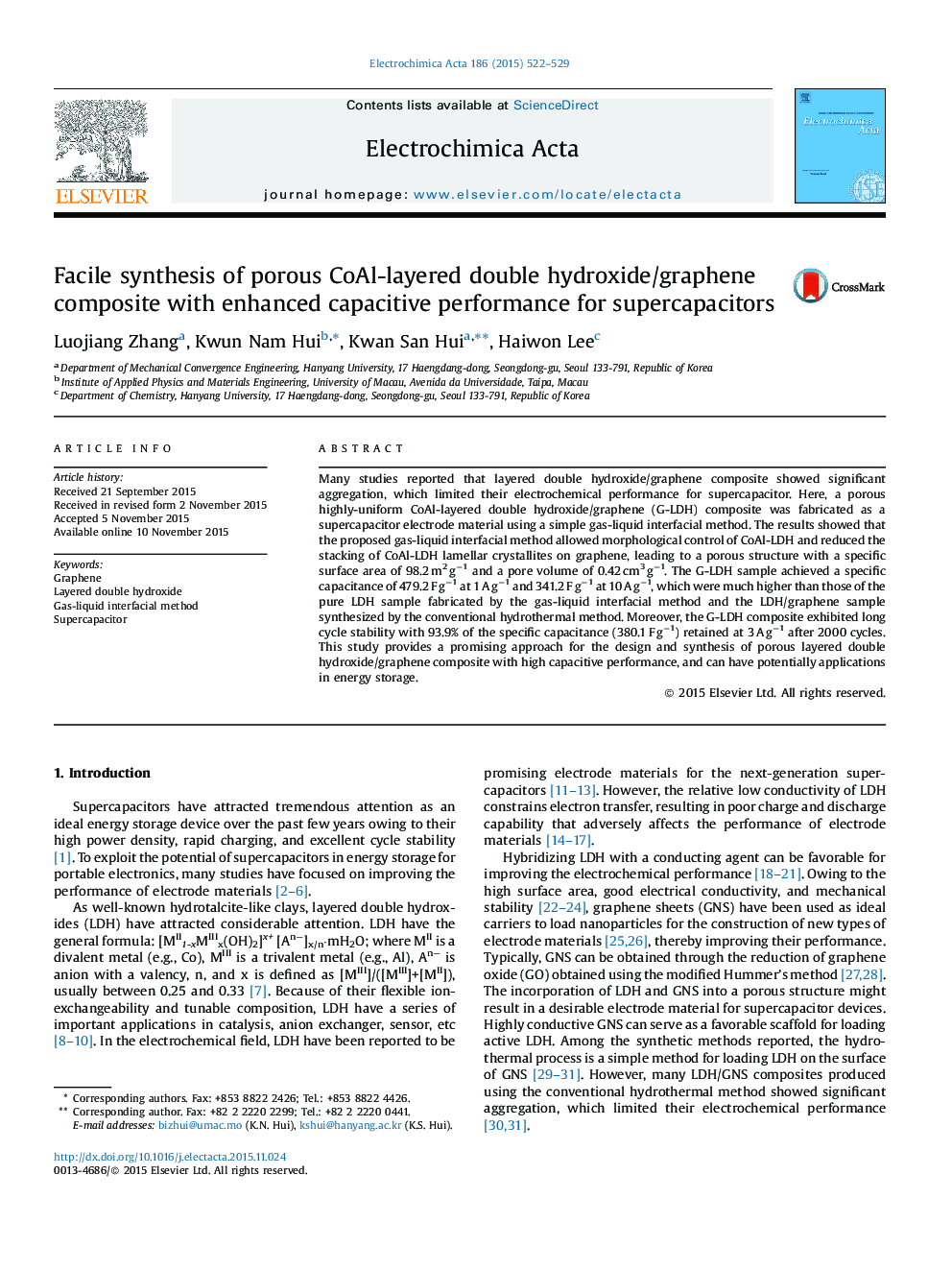| Article ID | Journal | Published Year | Pages | File Type |
|---|---|---|---|---|
| 183598 | Electrochimica Acta | 2015 | 8 Pages |
•Porous graphene/CoAl-layered double hydroxide was obtained by gas-liquid interfacial method.•The composite showed 3D structures with LDH uniformly grown on GNS surface.•The unique structure led to an improved electrochemical performance.
Many studies reported that layered double hydroxide/graphene composite showed significant aggregation, which limited their electrochemical performance for supercapacitor. Here, a porous highly-uniform CoAl-layered double hydroxide/graphene (G-LDH) composite was fabricated as a supercapacitor electrode material using a simple gas-liquid interfacial method. The results showed that the proposed gas-liquid interfacial method allowed morphological control of CoAl-LDH and reduced the stacking of CoAl-LDH lamellar crystallites on graphene, leading to a porous structure with a specific surface area of 98.2 m2 g−1 and a pore volume of 0.42 cm3 g−1. The G-LDH sample achieved a specific capacitance of 479.2 F g−1 at 1 A g−1 and 341.2 F g−1 at 10 A g−1, which were much higher than those of the pure LDH sample fabricated by the gas-liquid interfacial method and the LDH/graphene sample synthesized by the conventional hydrothermal method. Moreover, the G-LDH composite exhibited long cycle stability with 93.9% of the specific capacitance (380.1 F g−1) retained at 3 A g−1 after 2000 cycles. This study provides a promising approach for the design and synthesis of porous layered double hydroxide/graphene composite with high capacitive performance, and can have potentially applications in energy storage.
Graphical abstractCoAl-LDH crystallites homogeneously grow on graphene sheets by a gas-liquid interfacial method and the composite exhibits improved electrochemical performance.Figure optionsDownload full-size imageDownload as PowerPoint slide
